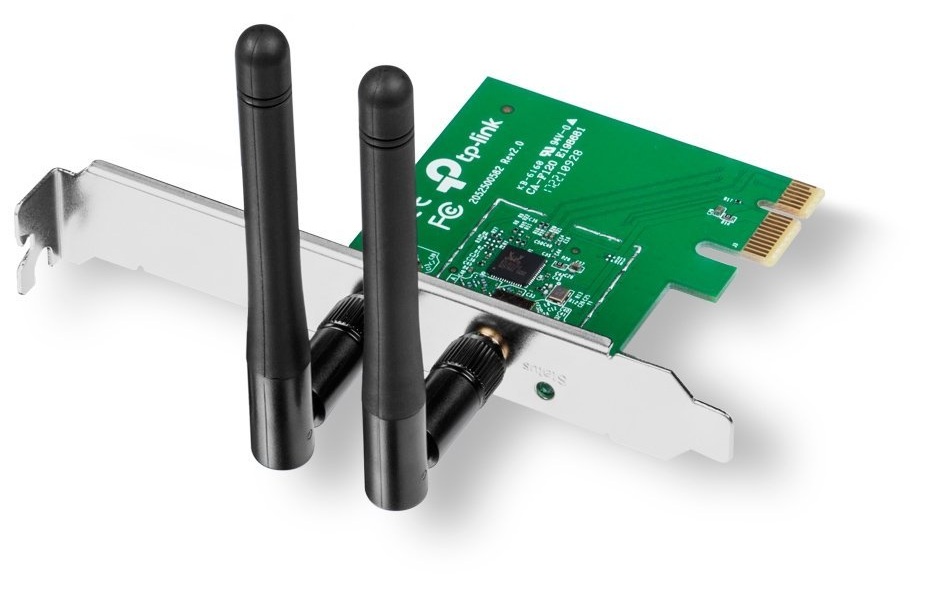Complete Wireless Technologies sells narrow band and fire pagers by Motorola and Unication and we also offer a Wide Area Two-Way Radio Network, assistance with FCC Licensing, and propagation study services. From Unication and Motorola pagers to Vertex Standard and BK Technologies radios, CWT takes great care in selling only quality two-way. Vertex Standard Network Hardware eVerge EVX-Link Faqs (2 pages) Full list of Vertex Standard Network Hardware Manuals Vertex Standard Portable Radio Manuals 33 Devices / 84 Documents. VERTEX STANDARD CO., LTD. Will make reasonable efforts to maintain and operate the WIRES™Server for the enjoyment of Amateur Radio operators and the development of Amateur Radio technology; however, we may suspend the maintenance and operation of the Server in the future, at our sole discretion. Current list of Vertex/Standard Radio programming files available for download in the members area.
In mathematics, and more specifically in graph theory, a vertex (plural vertices) or node is the fundamental unit of which graphs are formed: an undirected graph consists of a set of vertices and a set of edges (unordered pairs of vertices), while a directed graph consists of a set of vertices and a set of arcs (ordered pairs of vertices). In a diagram of a graph, a vertex is usually represented by a circle with a label, and an edge is represented by a line or arrow extending from one vertex to another.
From the point of view of graph theory, vertices are treated as featureless and indivisible objects, although they may have additional structure depending on the application from which the graph arises; for instance, a semantic network is a graph in which the vertices represent concepts or classes of objects.
The two vertices forming an edge are said to be the endpoints of this edge, and the edge is said to be incident to the vertices. A vertex w is said to be adjacent to another vertex v if the graph contains an edge (v,w). The neighborhood of a vertex v is an induced subgraph of the graph, formed by all vertices adjacent to v.
Types of vertices[edit]

The degree of a vertex, denoted 𝛿(v) in a graph is the number of edges incident to it. An isolated vertex is a vertex with degree zero; that is, a vertex that is not an endpoint of any edge (the example image illustrates one isolated vertex).[1] A leaf vertex (also pendant vertex) is a vertex with degree one. In a directed graph, one can distinguish the outdegree (number of outgoing edges), denoted 𝛿 +(v), from the indegree (number of incoming edges), denoted 𝛿−(v); a source vertex is a vertex with indegree zero, while a sink vertex is a vertex with outdegree zero. A simplicial vertex is one whose neighbors form a clique: every two neighbors are adjacent. A universal vertex is a vertex that is adjacent to every other vertex in the graph.
A cut vertex is a vertex the removal of which would disconnect the remaining graph; a vertex separator is a collection of vertices the removal of which would disconnect the remaining graph into small pieces. A k-vertex-connected graph is a graph in which removing fewer than k vertices always leaves the remaining graph connected. An independent set is a set of vertices no two of which are adjacent, and a vertex cover is a set of vertices that includes at least one endpoint of each edge in the graph. The vertex space of a graph is a vector space having a set of basis vectors corresponding with the graph's vertices.
A graph is vertex-transitive if it has symmetries that map any vertex to any other vertex. In the context of graph enumeration and graph isomorphism it is important to distinguish between labeled vertices and unlabeled vertices. A labeled vertex is a vertex that is associated with extra information that enables it to be distinguished from other labeled vertices; two graphs can be considered isomorphic only if the correspondence between their vertices pairs up vertices with equal labels. An unlabeled vertex is one that can be substituted for any other vertex based only on its adjacencies in the graph and not based on any additional information.
Vertices in graphs are analogous to, but not the same as, vertices of polyhedra: the skeleton of a polyhedron forms a graph, the vertices of which are the vertices of the polyhedron, but polyhedron vertices have additional structure (their geometric location) that is not assumed to be present in graph theory. The vertex figure of a vertex in a polyhedron is analogous to the neighborhood of a vertex in a graph.
See also[edit]
References[edit]
- ^File:Small Network.png; example image of a network with 8 vertices and 10 edges
- Gallo, Giorgio; Pallotino, Stefano (1988). 'Shortest path algorithms'. Annals of Operations Research. 13 (1): 1–79. doi:10.1007/BF02288320.
- Berge, Claude, Théorie des graphes et ses applications. Collection Universitaire de Mathématiques, II Dunod, Paris 1958, viii+277 pp. (English edition, Wiley 1961; Methuen & Co, New York 1962; Russian, Moscow 1961; Spanish, Mexico 1962; Roumanian, Bucharest 1969; Chinese, Shanghai 1963; Second printing of the 1962 first English edition. Dover, New York 2001)
- Chartrand, Gary (1985). Introductory graph theory. New York: Dover. ISBN0-486-24775-9.
- Biggs, Norman; Lloyd, E. H.; Wilson, Robin J. (1986). Graph theory, 1736-1936. Oxford [Oxfordshire]: Clarendon Press. ISBN0-19-853916-9.
- Harary, Frank (1969). Graph theory. Reading, Mass.: Addison-Wesley Publishing. ISBN0-201-41033-8.
- Harary, Frank; Palmer, Edgar M. (1973). Graphical enumeration. New York, Academic Press. ISBN0-12-324245-2.
External links[edit]
- Weisstein, Eric W.'Graph Vertex'. MathWorld.

_driver.png)
Description

FEATURES AND BENEFITS
EASY TO USE AND MANAGE
Communicate instantly and manage talkgroups and subscriptions in real time. Maximize coverage, connections, and productivity without
expanding infrastructure. Say goodbye to radio programming cables. Update an entire fleet over the air, without having to touch a single device.
Grows with your business – Easily add or remove subscriptions. No customer service required. With self-service billing, you can scale subscriptions based on your workload.
Communicate across platforms – Boost collaboration no matter what device the team is using. Whether it’s front office workers talking to the construction site, or the warehouse
coordinating the drop-off with the delivery driver, the WAVE app enables instant communication between smartphones and devices across carriers.
Radio integration capabilities – Connect to MOTOTRBO systems you already own and expand the reach of your trunked systems to a nationwide network* for maximum ROI.
One button, multiple teams – Collaborate at the speed of business with push-to-talk. Contact multiple teams simultaneously, and securely communicate with just one button.
NATIONWIDE* PUSH-TO-TALK
Vertex Standard Software
Get the best of both worlds by using two-way radio communication on a nationwide network*.
Nationwide* push-to-talk – Communicate instantly with team members across the country at the push of a button. Bridge multiple job sites, facilities and operations without needing to set up or maintain a complicated infrastructure.
Vertex Standard Mic
*Coverage will vary. See user guide for details.
BUILT FOR THE JOB
Vertex Standard Network & Wireless Cards Drivers
Get all the benefits of WAVE with a rugged two-way radio. Purpose built for business, everything about the TLK Series two-way radios are smart and intentional.
Built tough – Never worry about rain, dust, extreme temperatures or even the occasional drop. These radios are designed to perform in harsh working environments.
Location tracking – Easily manage your workforce using GPS to maximize safety, check project status, find faster routes, modify tasks, and position team members where they’re needed most.
Wi-Fi connectivity – Stay in touch inside industrial buildings and other environments where cellular coverage may be limited by sending and receiving push-to-talk calls over compatible Wi-Fi networks.

Private and group push-to-talk – Flexible call options let you communicate between groups or one on one conversation.
Emergency calling and alerts – Enhance worker safety by quickly connecting those in danger with the designated individual or group who can provide assistance.
Powerful and slim design – Move seamlessly from the field to the office with a streamlined device that supports one-handed use. Hear conversations clearly in noisy environments with loud and clear audio.
SL300 accessory-compatible – Leverage your prior investment by using earpieces, headsets, batteries, charging stations and other Motorola SL300 accessories with the TLK 100 two-way radio.
Long battery life – Have power when you need it most. With a battery that is designed to last 18 hours, you can focus on the project instead of worrying about recharging.
Screenless design – Maximize productivity by minimizing the distractions of email, text and other apps—while empowering your team to focus on the job at hand.
| GENERAL SPECIFICATIONS | |
|---|---|
| Network | 4G LTE |
| Channel Capacity | 8 Channels (expandable to 96) |
| Contact List | 300 contacts |
| Dimensions (H x W x L) | Without Antenna: 5.17 x 2.31 x 0.87 in (131.3 x 58.6 x 22.15 mm) With Antenna: 6.65 x 2.31 x 0.87 in (168.9 x 58.6 x 22.15 mm) |
| Weight with Battery | 5.86 oz (166g) |
| Battery Capacity | 3.7V (Nominal) 2300 mAh with PMNN4468A |
| Battery (Li-Ion (2300 mAh) Battery) Operating Hours 5:5:90 Duty Cycle* | 18 Hours |
| Voice Codec | OPUS |
| Bluetooth | V4.2, BLE |
| GPS | GNSS / A-GNSS (GPS, GLONASS, Galileo, BeiDou) |
| Wi-Fi | 802.11 a/b/g/n 2.4/5.0 GHz |
| SIM CARD | Embedded MFF2 UICC |
| IP Rating | IP54 IEC60529 |
| Apps Supported | Powered by WAVE |
| Encryption | AES-256 |

